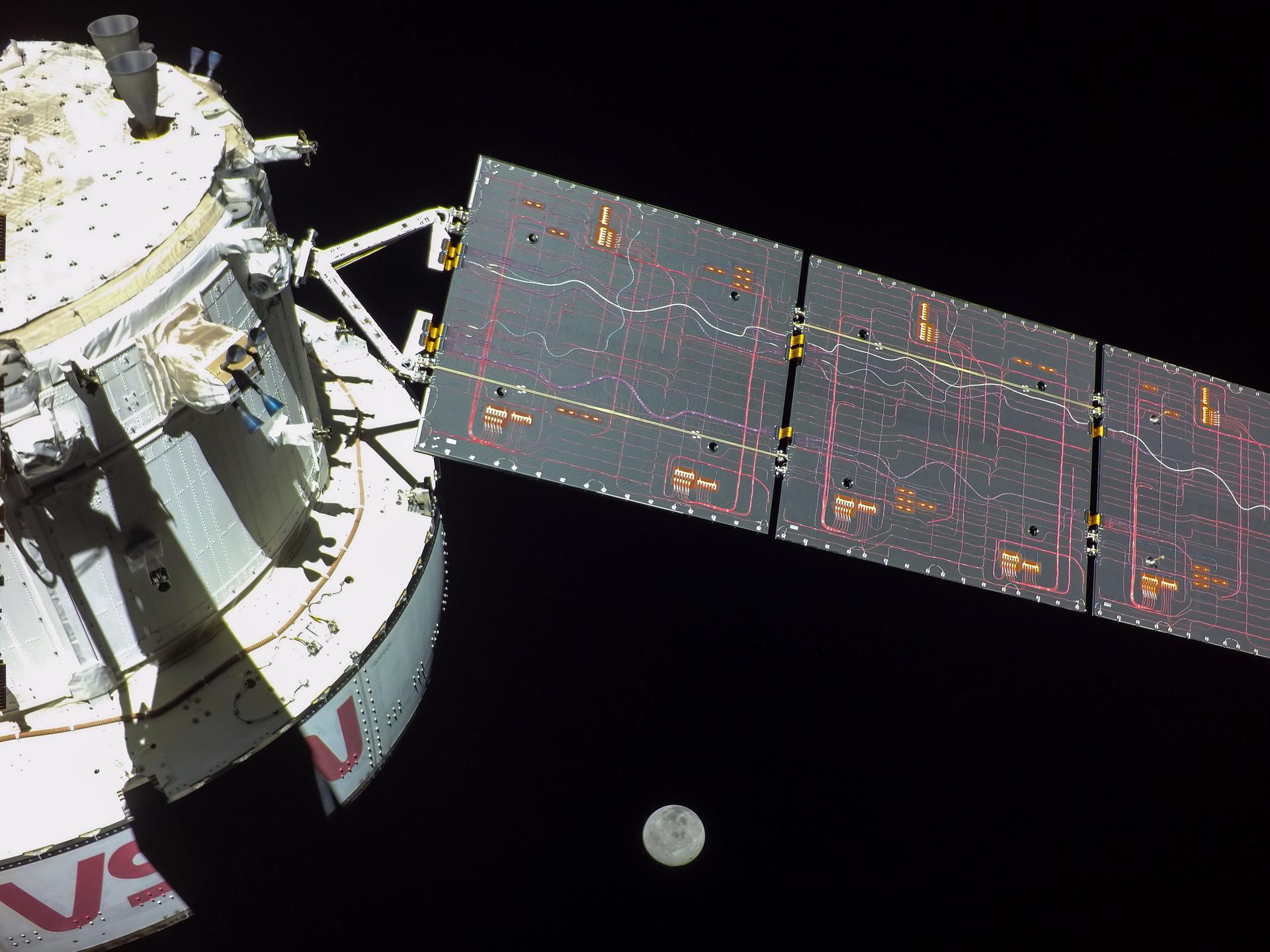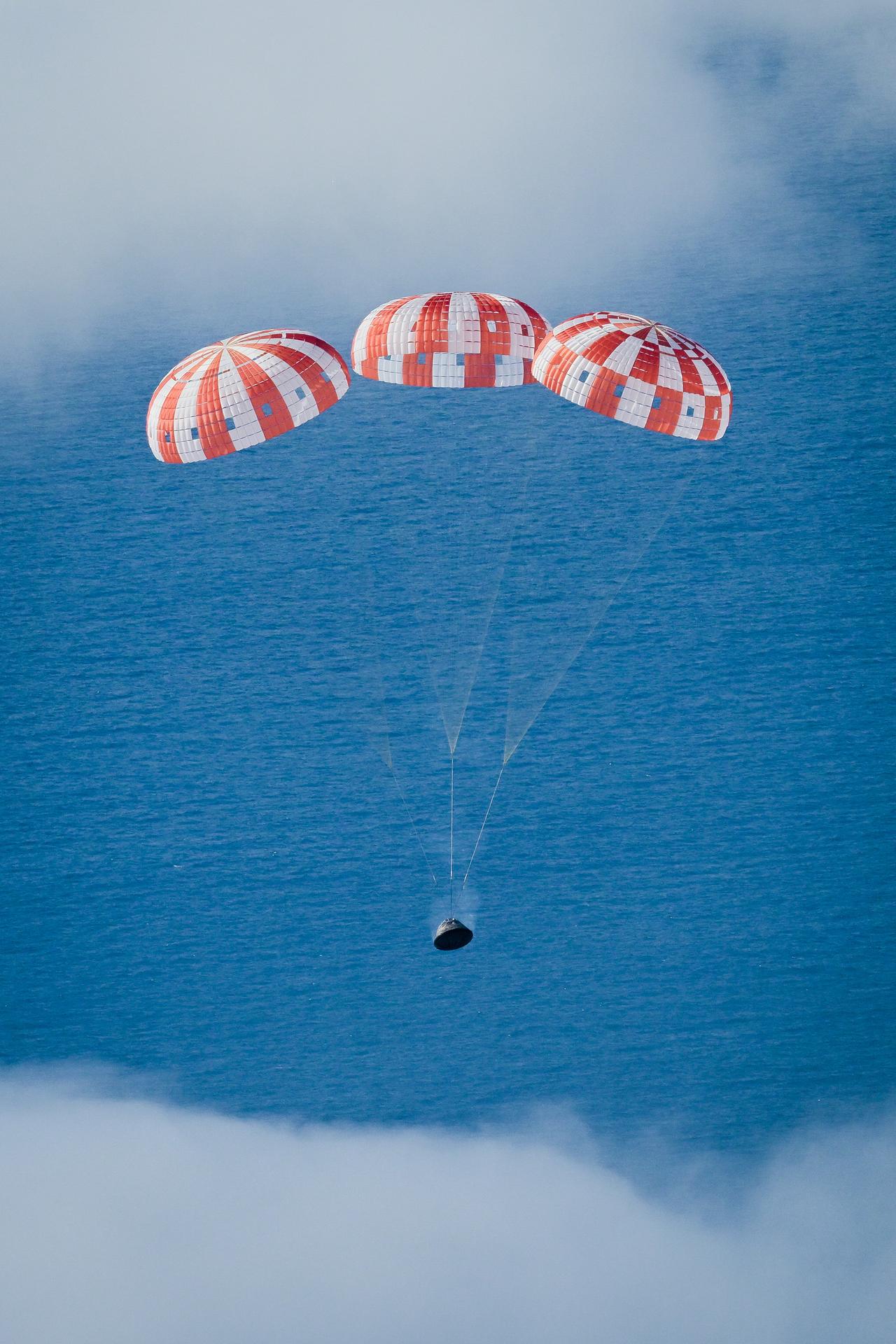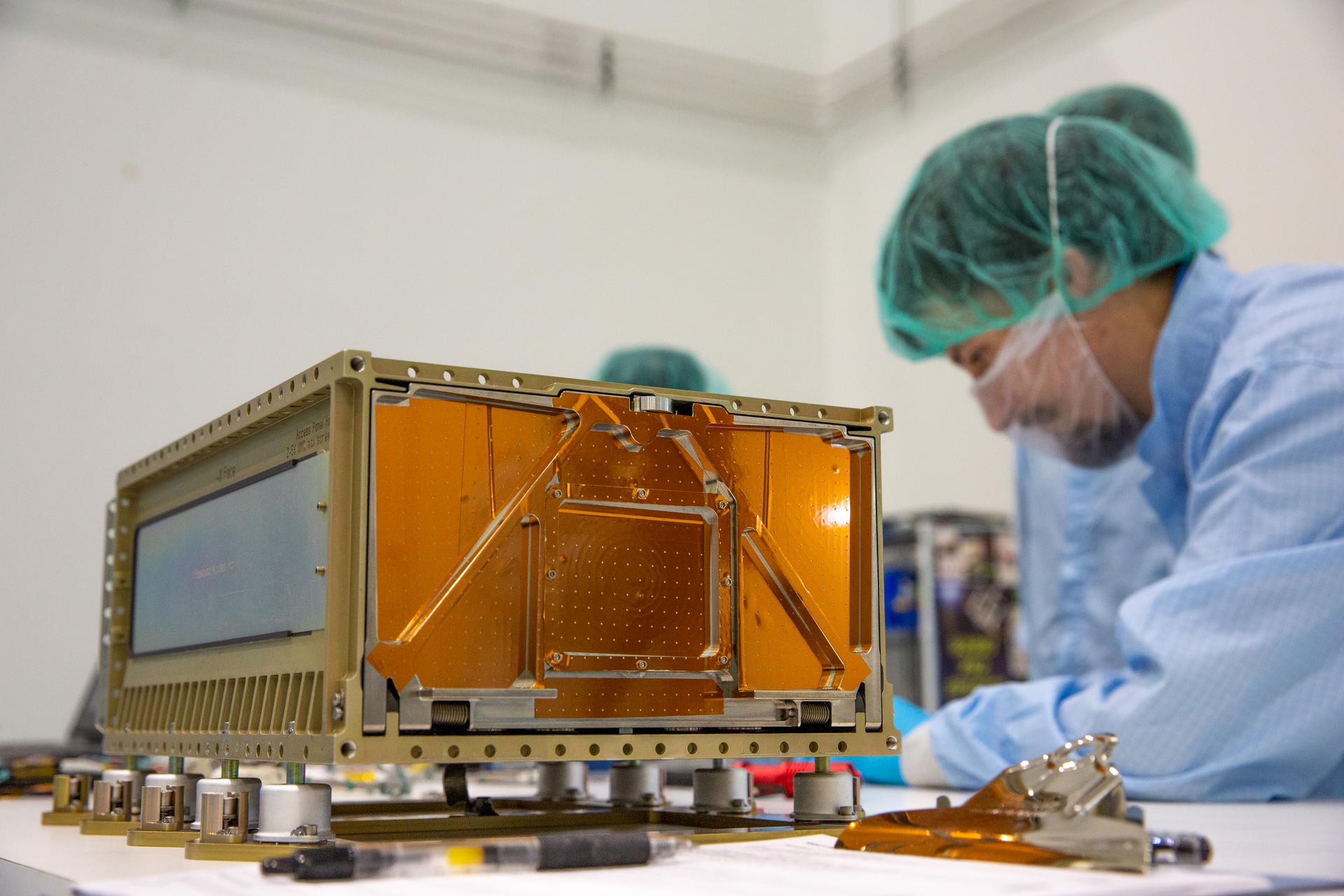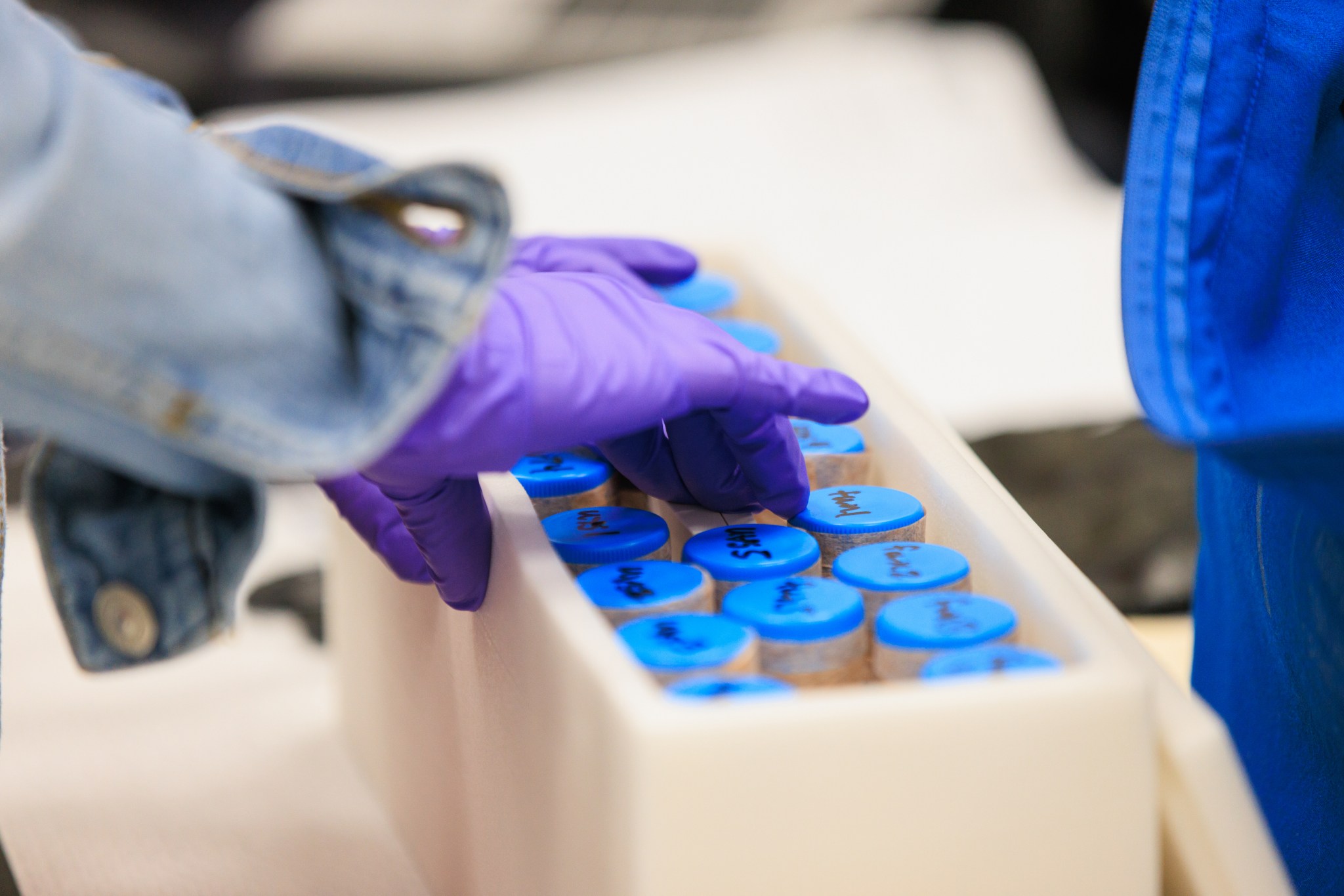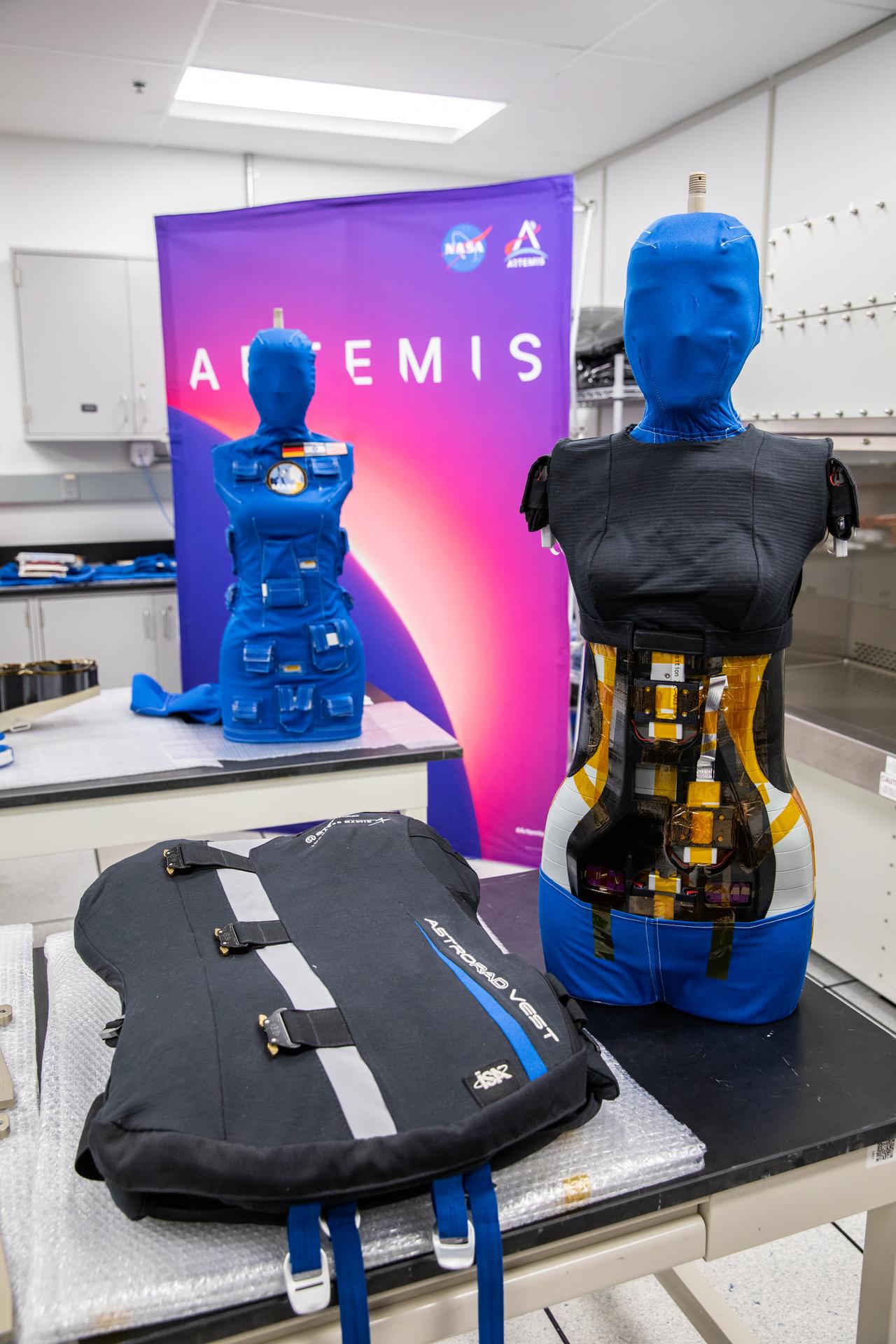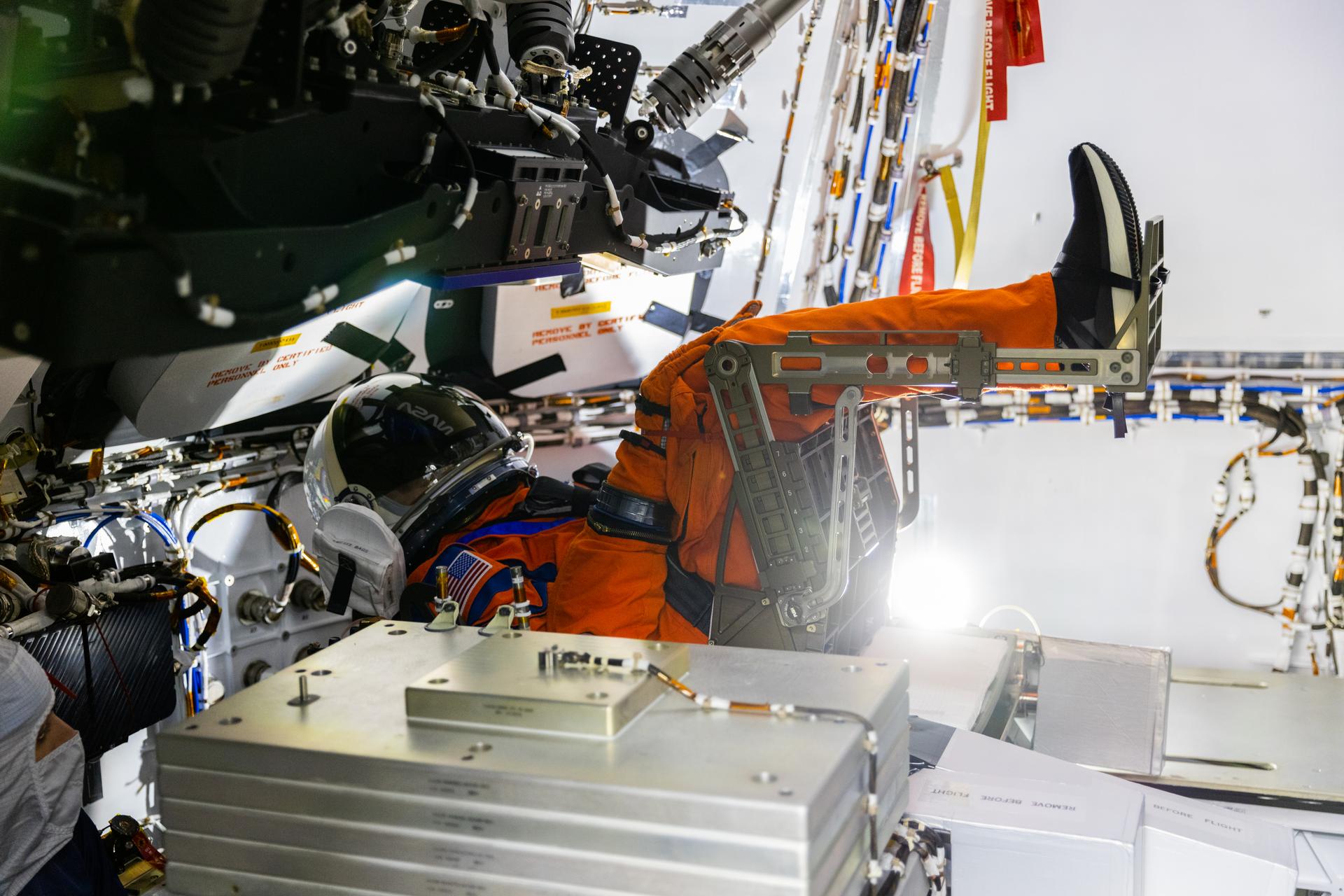Artemis I

Artemis I
Artemis I will be the first integrated flight of NASA’s new deep space human exploration system — the Orion spacecraft, the Space Launch System (SLS) rocket, and Exploration Ground Systems at Kennedy Space Center in Florida — and will test our capabilities to orbit the Moon and return to Earth and set the stage for future missions to the lunar vicinity.
During this flight, an uncrewed Orion will launch on the most powerful rocket NASA has ever developed and fly farther than any spacecraft designed and built for humans has ever flown. On an approximate four to six week mission, it will travel 280,000 miles from Earth and 40,000 beyond the far side of the Moon, demonstrating the performance of both Orion and the SLS rocket on their maiden flight, gathering important engineering data. Orion will stay in space longer than any spacecraft for astronauts has without docking to a space station, and return home faster and hotter than ever before.
SLS and Orion will blast off from Launch Complex 39B at NASA’s modernized spaceport at Kennedy. The SLS rocket is designed for missions beyond low-Earth orbit carrying crew or cargo to the Moon and beyond. The first SLS vehicle, called Block 1, will create more than 8.8 million pounds of thrust during launch and ascent and will be capable of delivering more than 27 metric tons (59,525 pounds) to orbits beyond the Moon. Propelled by a pair of five segment boosters and four RS-25 engines, the rocket will reach the period of greatest atmospheric force within ninety seconds. After jettisoning the boosters, service module panels, and launch abort system, the core stage engines will shut down and the core stage will separate from the spacecraft, leaving Orion attached to the interim cryogenic propulsion stage (ICPS) that will propel it toward the Moon.
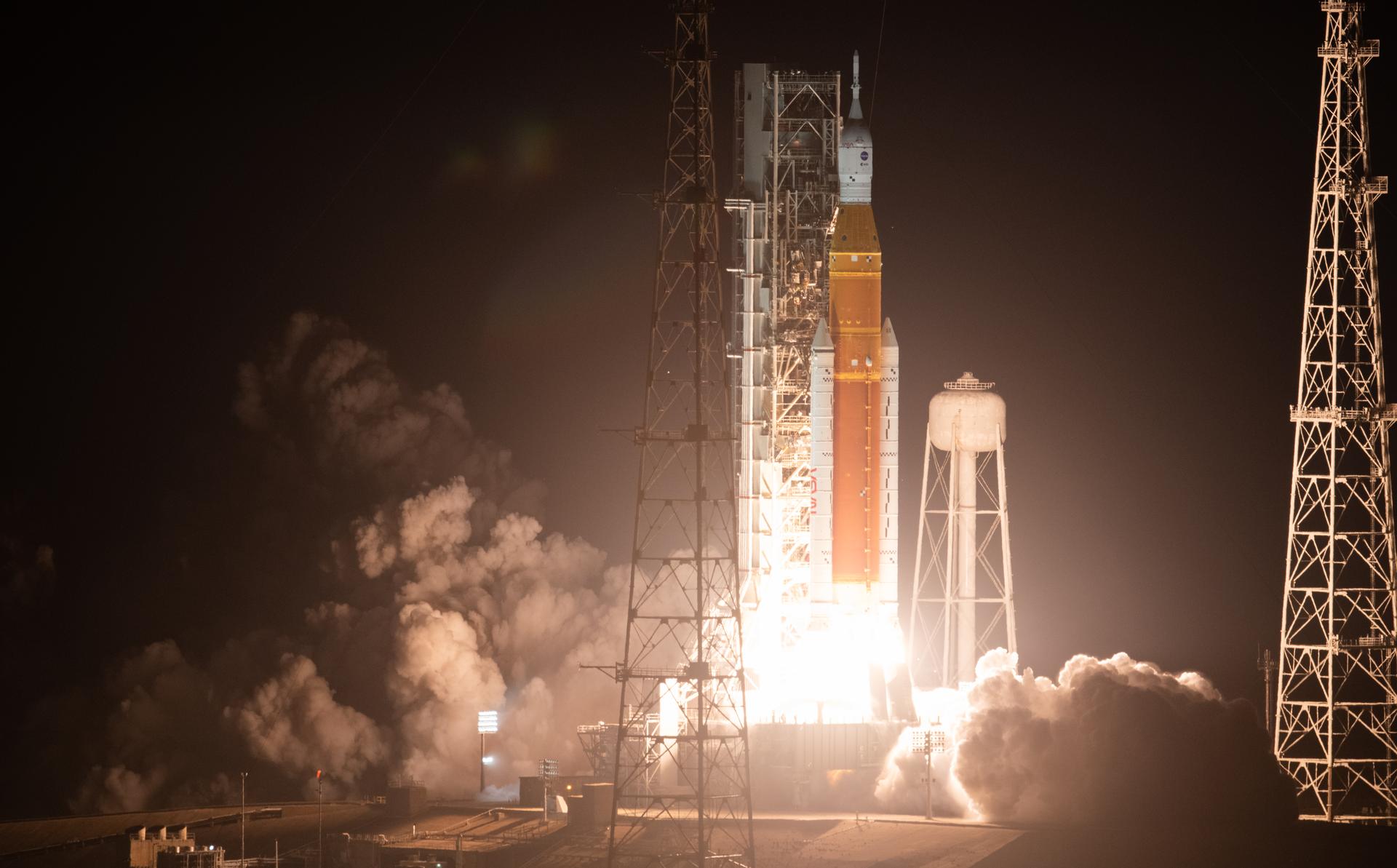
As the spacecraft makes an orbit of Earth, it will deploy its solar arrays and the ICPS will give Orion the big push it needs to leave Earth’s orbit and travel toward the Moon. From there, Orion will separate from the ICPS approximately two hours after launch. The ICPS will then deploy several small satellites, known as CubeSats, to perform several experiments and technology demonstrations that will improve our knowledge of the deep space environment.
As Orion continues on its path from Earth orbit to the Moon, it will be propelled by a service module provided by ESA (European Space Agency). The service module supplies the spacecraft’s main propulsion system and power, and houses air and water for astronauts on future missions. Orion will pass through the Van Allen radiation belts, and fly past the Global Positioning System (GPS) satellite constellation and above communication satellites in Earth orbit. To communicate with mission control at NASA’s Johnson Space Center in Houston, Orion will switch from NASA’s Tracking and Data Relay Satellites system and connect through the Deep Space Network. From here, Orion will continue to demonstrate its unique design in navigation, communication, and operations in a deep space environment.
The outbound trip to the Moon will take several days, during which time engineers will evaluate the spacecraft’s systems and, as needed, correct its trajectory. Orion will fly about 60 miles above the surface of the Moon at its closest approach, and then use the Moon’s gravitational force to propel Orion into a distant retrograde, or opposite, orbit about 40,000 miles past the Moon. This is 30,000 miles farther than Apollo travelled during Apollo 13 and the farthest in space any spacecraft built for humans has ever flown.
The spacecraft will stay in that orbit for at least six days to collect data and allow mission controllers to assess the performance of the spacecraft. During this period, Orion will travel in a direction around the Moon opposite from the direction the Moon travels around Earth.
For its return trip to Earth, Orion will do another close flyby of the Moon that takes the spacecraft within about 60 miles of the lunar surface, then use another precisely timed engine firing of the service module in conjunction with the Moon’s gravity to accelerate back toward Earth. This maneuver will set the spacecraft on its trajectory to enter our planet’s atmosphere traveling around 25,000 mph and producing temperatures of approximately 5,000 degrees Fahrenheit, testing the heat shield’s performance.
The mission will end with a test of Orion’s capability to return safely to Earth as the spacecraft makes a precision landing within eyesight of the recovery ship off the coast of San Diego. Following splashdown, Orion will remain powered for a period of time as divers from the U.S. Navy and operations teams from NASA’s Exploration Ground Systems approach in small boats from the waiting Naval recovery ship. The divers will briefly inspect the spacecraft for hazards and hook up tending and tow lines, then engineers will tow the capsule into the well deck of the recovery ship to bring the spacecraft home.
| Launch Date | 2022 |
| Launch Site | Kennedy Space Center, Florida, Launch Pad 39B |
| Launch Vehicle | Space Launch System Block 1 |
| Orion Gross Liftoff Weight | 72,000 lbs. |
| Trans-Lunar Injection Mass | 53,000 lbs. |
| Post-Trans Lunar Injection Mass | 51,500 lbs. |
Secondary Payloads
The payload mass capability of the SLS and the unused volume of the Orion stage adapter that connects the interim cryogenic propulsion stage (ICPS) to the spacecraft provide a rare opportunity for small, low-cost science and technology experiments to be deployed into deep space. These secondary payloads, known as CubeSats, are not much larger than a shoebox but contain science and technology investigations or technology demonstrations that help pave the way for future, deep space human exploration. International space agency partners and universities are involved with several of the CubeSat payloads.
The Artemis I CubeSats are 6U in size. One U – or unit – is 10 cm x 10 cm x 10 cm. The Artemis I payloads are limited to about 25 pounds (11.3 kg) each. Several of the CubeSats chosen to fly on Artemis I are lunar-focused and may help NASA address Strategic Knowledge Gaps (SKGs) to inform research strategies and prioritize technology development of human and robotic exploration. Other missions will be testing innovative propulsion technologies, studying space weather, analyzing the effects of radiation on organisms, and providing high resolution imagery of the Earth and the Moon. Some of the CubeSats are competing in the Cube Quest Challenge, vying for prizes for accomplishing such goals as farthest communication to Earth from space. The CubeSats will be deployed after Orion separates from the Orion stage adapter and ICPS and is a safe distance away. Each payload will be ejected with a spring mechanism from dispensers installed on the Orion stage adapter.
Artemis I Secondary Payload Facts
Weight Limit: 25 lbs. (11.3 kilograms) each
Size: 6U (4.4” x 9.4” x 14.4”) Equivalent to six 10 cm square units
Deployment opportunities are along the upper stage disposal trajectory.
The Secondary Payload Deployment System includes an avionics unit, mounting brackets, cable harnesses, and a vibration mitigation system.
Artemis I manifested payloads are listed below with their provider, area of exploration:
Moon
| Lunar IceCube | Morehead State University, Kentucky | Searching for water in all forms and other volatiles with an infrared spectrometer |
| LunaH-Map | Arizona State University, Arizona | Creating higher-fidelity maps of near-surface hydrogen in craters and other permanently shadowed regions of the lunar South Pole with neutron spectrometers |
| OMOTENASHI | JAXA, Japan | Developing the world’s smallest lunar lander and studying the lunar environment |
| LunIR | Lockheed Martin, Colorado | Performing advanced infrared imaging of the lunar surface |
Sun
| CuSP | Southwest Research Institue, Texas | Measuring particles and magnetic fields as a space weather station |
Asteroid
| NEA Scout | Marshall Space Flight Center, Alabama | Traveling by solar sail to a near-Earth asteroid and taking pictures and other characterizations of its surface |
Earth
| EQUULEUS | University of Tokyo/JAXA, Japan | Imaging the Earth’s plasmasphere for a better understanding of Earth’s radiation environment from Earth-Moon LaGrange 2 point |
Other Missions
| BioSentinel | Ames Research Center, California | Using single-celled yeast to detect, measure and compare the impact of deep-space radiation on living organisms over a long period of time |
| ArgoMoon | European Space Agency/ASI, ArgoTec, Italy | Observing the interim cryogenic propulsion stage with advanced optics and software imaging system |
Centennial Challenges
| Team Miles | Florida | Demonstrating propulsion using plasma thrusters and competing in NASA’s Deep Space Derby |
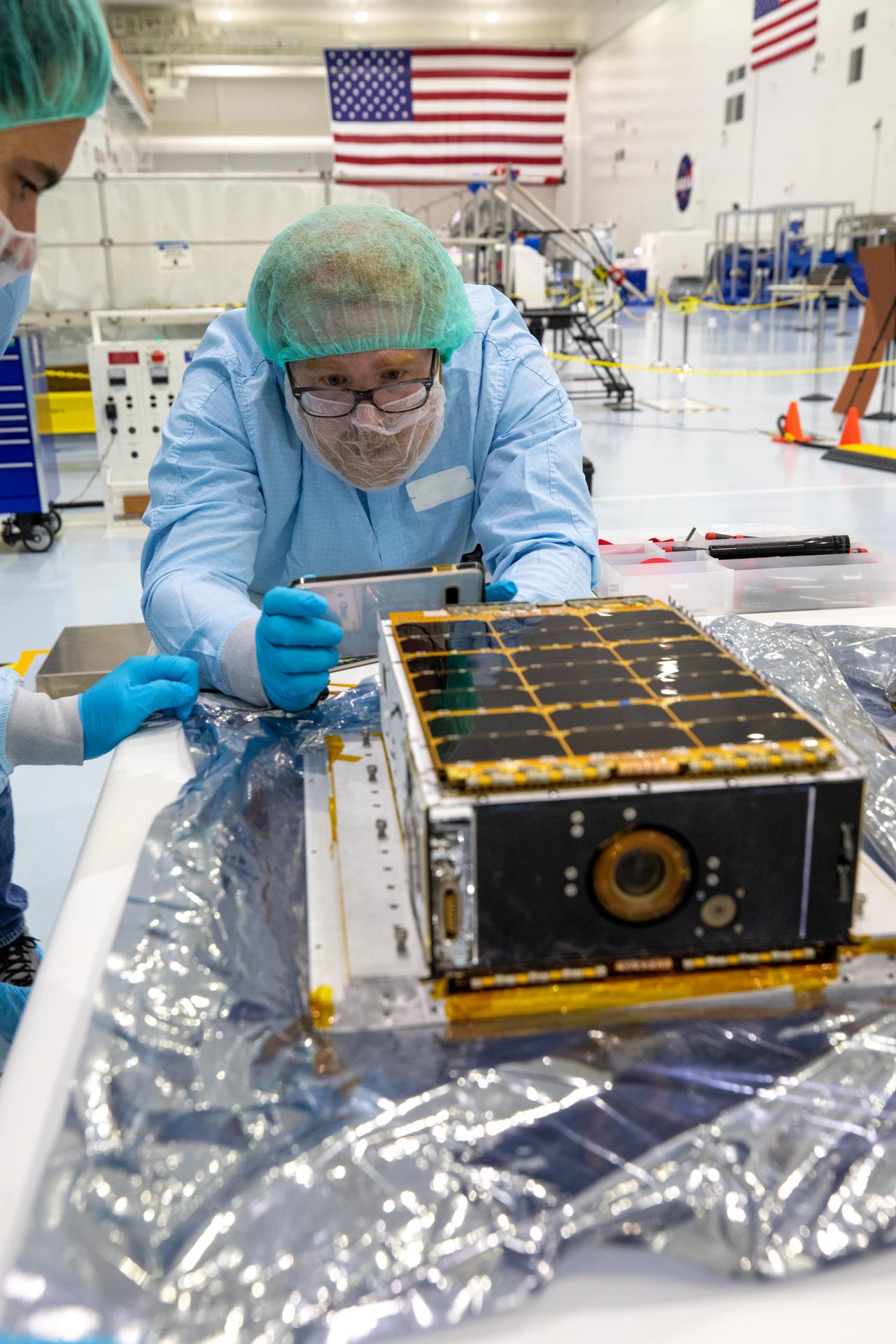
Space Biology Experiments
Four space biology investigations will be carried in a container stored in the crew compartment of the Orion capsule for the duration of the mission, as it passes through the Van Allen Belts on the way to the Moon and again on the way back to Earth. The experiments will study DNA damage and protection from radiation for missions to the Moon, where radiation exposure will be roughly twice what it is on the International Space Station.
Artemis I provides an opportunity to study effects from the combined environment of space radiation and microgravity. Beyond low-Earth orbit, cosmic radiation is trapped in the Van Allen Belts that are part of Earth’s magnetosphere and can be dangerous to humans and other living organisms, as well as sensitive electronics. The Moon is about 240,000 miles from the Earth, which is about 1,000 times more than the distance from Earth to the International Space Station and offers a true deep space radiation environment. All specimens will be returned to the researchers for post-flight analyses after the spacecraft returns. NASA selected investigators from four institutions for awards totaling ~$1.6 million in fiscal years 2019-2022.
Federica Brandizzi, Ph.D., Michigan State University, Life beyond Earth
Effect of space flight on seeds with improved nutritional value – This study will characterize how spaceflight effects nutrient stores in plant seeds with the goal of gaining new knowledge that will help increase the nutritional value of plants grown in spaceflight.
Timothy Hammond, Ph.D., Institute For Medical Research, Inc., Fuel to Mars
This research will include studies with the photosynthetic algae, Chlamydomonas reinhardtii, to identify important genes that contribute to its survival in deep space.
Zheng Wang, Ph.D., Naval Research Laboratory, Investigating the Roles of Melanin and DNA Repair on Adaptation and Survivability of Fungi in Deep Space
Researchers will be using the fungus Aspergillus nidulans to investigate radioprotective effects of melanin and the DNA damage response.
Luis Zea, Ph.D., University of Colorado, Boulder, Multi-Generational Genome-Wide Yeast Fitness Profiling Beyond and Below Earth’s van Allen Belts
This investigation will use yeast as a model organism to identify genes that help organisms adapt to the conditions of both deep spaceflight on the Artemis I mission, and of low Earth orbit on the space station.
NASA awarded these grants under the NASA Research Announcement NNH18ZTT001N-EM1 “Appendix A: Orion Exploration Mission-1 Research Pathfinder for Beyond Low Earth Orbit Space Biology Investigations” which is part of the Research Opportunities in Space Biology (ROSBio) Omnibus. The Space Biology Program is managed by the Space Life and Physical Sciences Research and Applications Division in NASA’s Human Exploration and Operations Mission Directorate at the agency’s headquarters in Washington, D.C.
Matroshka AstroRad Radiation Experiment (MARE)
Space radiation is one of the most significant hazards crews face on missions to the Moon and beyond. In 2018, NASA signed an agreement with Lockheed Martin Advanced Programs, the Israel Space Agency (ISA), and the German Aerospace Center (DLR) for an experiment to test the AstroRad radiation protection vest on Artemis I. The investigation, called the Matroshka AstroRad Radiation Experiment (MARE), will provide valuable data on radiation levels during missions to the Moon while testing the effectiveness of the new vest.
The Artemis I mission will not carry crew, but two identical manikin torsos equipped with radiation detectors. The manikins, called phantoms, are manufactured from materials that mimic human bones, soft tissues, and organs of an adult female. One phantom, named Zohar, will wear the AstroRad vest, while the other, named Helga, will not. Female forms were chosen because women typically have greater sensitivity to the effects of space radiation, but the AstroRad vest is designed to protect both males and females.
The phantoms have a three-centimeter grid embedded throughout the torsos that will enable scientists to map internal radiation doses to areas of the body that contain critical organs. With two identical torsos, scientists will be able to determine how well the new vest might protect crew from solar radiation, while also collecting data on how much radiation astronauts might experience inside Orion on a lunar mission – conditions that cannot be recreated on Earth.
Orion was designed to protect both humans and hardware during radiation events on Artemis missions. For example, in the event of a solar flare, Orion’s crew can take cover in the central part of the crew module, between the floor and the heat shield, inside two large stowage lockers. Using the stowage bags that were in the lockers, they will create a shelter around themselves, putting as much mass between them and the radiation source as possible and making it harder for solar particles to travel through. With a protective vest to help block solar energetic particles, crews could continue working during critical mission activities in spite of a solar storm.
ISA will provide the AstroRad vest for the mission, which was developed by StemRad, an Israeli company, in collaboration with Lockheed Martin. DLR will provide the phantoms and the majority of the radiation detectors, with further contributions by universities from around the world.
Manikin "Commander Moonikin Campos"
The “Moonikin,” a male-bodied manikin previously used in Orion vibration tests, will fly inside Orion on Artemis I to collect data for engineers on the ground to evaluate and fine tune crew conditions during missions to the Moon.
The Moonikin received the official name “Commander Moonikin Campos” as the result of a competitive bracket contest honoring NASA figures, programs, or astronomical objects. The name Campos is a dedication to Arturo Campos, a key player in bringing Apollo 13 safely back to Earth. The contest received more than 300,000 votes.
Campos will occupy the commander’s seat inside Orion and wear an Orion Crew Survival System suit– the same spacesuit that Artemis astronauts will use during launch, entry, and other dynamic phases of their missions.
Campos will be equipped with two radiation sensors and have additional sensors under its headrest and behind its seat to record acceleration and vibration data throughout the mission. Data from the Moonikin’s experience will be used to help NASA protect astronauts during future crewed Artemis missions.
Five additional accelerometers inside Orion will provide data for comparing vibration and acceleration between the upper and lower se
Callisto
Callisto is a technology demonstration developed through a reimbursable space act agreement with Lockheed Martin. Lockheed Martin has partnered with Amazon and Cisco to bring the Alexa digital assistant and Webex video collaboration aboard Orion’s first flight test in deep space.
Named after a mythological Greek goddess and one of Artemis’ hunting attendants, Callisto is meant to show how commercial technology could assist future astronauts on deep space missions.
The payload will demonstrate how astronauts and flight controllers can use human-machine interface technology to make their jobs simpler, safer and more efficient, and advance human exploration in deep space.
The industry-funded payload will be located on Orion’s center console and includes a tablet that will test Webex by Cisco video conferencing software to transmit video and audio from the Mission Control Center at Johnson, and custom-built hardware and software by Lockheed Martin and Amazon that will test Alexa, Amazon’s voice-based virtual assistant, to respond to the transmitted audio.




























